
Our first day in Mongolia will take us to the Khustain Nuruu National Park, 130 kilometers outside of Ulaanbaatar.
The Przewalski’s Horse is a rare and endangered subspecies of wild horse found in Central Asia’s steppes, also known as the Takhi horse. It has been reintroduced to its natural habitat in Mongolia, where it was once extinct in the wild. In 1993, Khustain Nuruu National Park was designated as a reserve, but in 1998, it was upgraded to a national park. In the park today, there are approximately 350 Takhi horses. There are 459 vascular plant species and 217 bird species in the park.
We will meet the park staff and be introduced to the project after arriving at the Khustain Nuruu National Park camp. In the afternoon, we’ll discover the park’s natural wonders by jeep, foot, or horseback.
(Ger camp B, L, D)
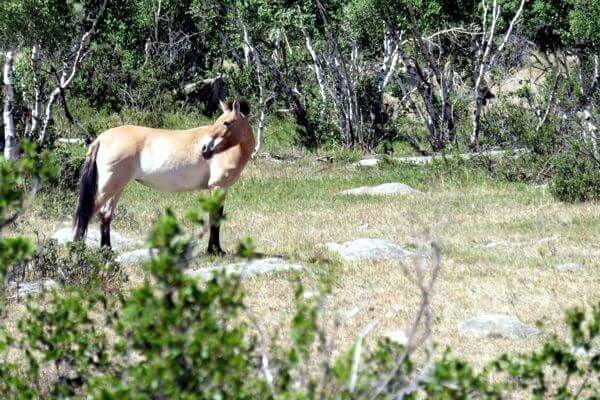

Today we will continue on driving to Khogno Khan National Park. We will trek in the Khogno Khan Mountains at the end of the day, walking up the mountain and taking in the incredible views of the hills, sand dunes, and grasslands. We’ll also pay a visit to the charming Ovgon Monastery.
The Elsen Tasarkhai Sand Dune, also known as Little Gobi, is a 100-kilometer-long sand dune not far from the mountain where our camel trek will begin. The landscape is a stark contrast between a semi-arid desert on grassland and a mountainous region with plentiful bushes and plants and a rich flora and fauna. The latter is well-known for its fragrances. Locals and monks gather them and use them in religious rituals to bless them. We’ll arrive at our camel breeding family in the evening and enjoy a warm meal and tea.
(Family stay B, L, D)
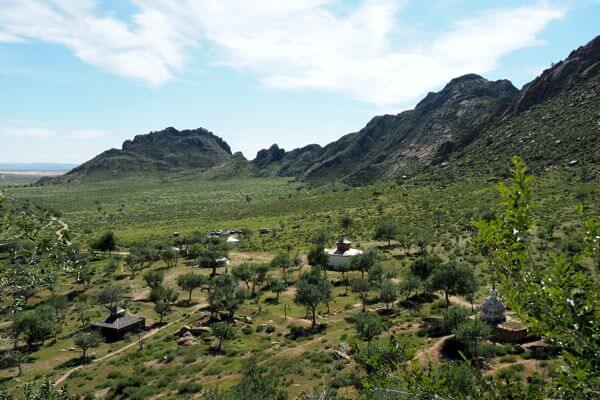

We will load our belongings onto camels in the morning and begin camel riding along the dune next to the impressive rocky mountain Khongo Khan. During our camel journey, we will be led by an experienced camel herder from the host family. We’ll learn how to water the camels and care for them in the same way that nomads do. We’ll have plenty of time to explore the area before setting up our first camp site. As the sun sets and the desert cools, enjoy your evening.
(Tented Camp B, L, D)
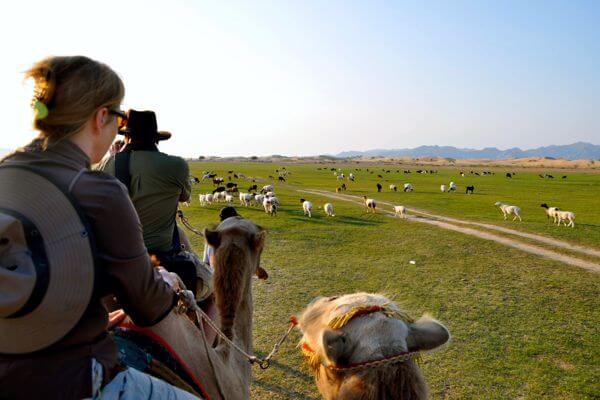

We’ll continue our camel ride across semi-arid desert rolling dunes in the middle of grassland. Elsen Tasarkhai attracts a lot of tourism because of its proximity to Ulaanbaatar, but as soon as we leave, it will be just you and your thoughts in a never ending land. Sometimes you find yourself in the middle of nowhere and sometimes in the middle of nowhere you find yourself.
(Tented Camp B, L, D)
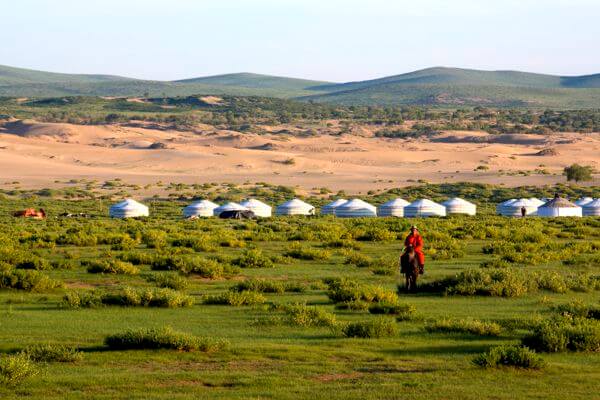

On our final day of camel riding, we will return to the camel breeding family. We’ll arrive in the afternoon, say our goodbyes to the family members, and then head to our Ger camp.
(Ger Camp B, L, D)
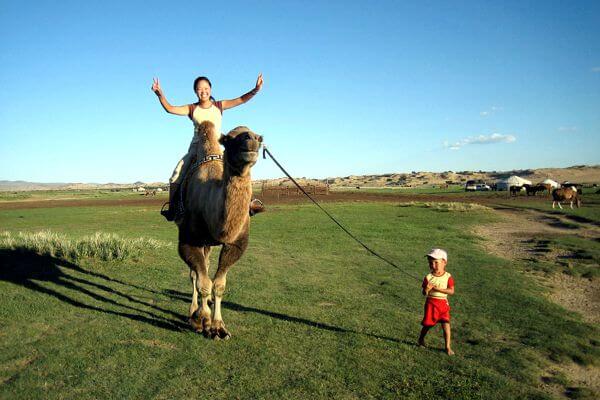

Today we will be driving to Karakorum (also called Kharkhorin). Karakorum was the capital of Genghis Khan’s Mongolian Empire in the thirteenth century. In 1220, Genghis Khan ordered the building of Karakorum on the ruins of Turug and Uigur cities in the Orkhon valley at the eastern end of the Khangai Mountains. During the reign of Ugedei Khan, it was completed 15 years later. The town was very multicultural and culturally accepting.
The silver tree, which was once part of Möngke Khan’s palace, has become Karakorum’s emblem.
From 1220 to 1260, it was at its most prosperous. Karakorum existed as the great capital of the Euro-Asian Empire, with Mongolia at its heart, and as the epicenter of politics, trade, culture, faith, intellect, and diplomacy, as well as the most visible link in international relations.
Between 1260 and 1380, Karakorum lost its status as the capital of the Great Mongolian Empire and became Mongolia’s capital. When Kublai Khan and his younger brother, Ariq Boke, assumed the throne of the Mongol Empire in 1260, they moved their capital to what is now Beijing. Karakorum was reduced to the administrative center of a Yuan Dynasty provincial backwater.
After 110 years after Kublai Khan transferred the Empire capital to China in 1260, the Mongolian Yuan Dynasty fell in 1368, and the center of Mongolian government was shifted to its homeland. It allowed Karakorum to regain its former glory.
The town was captured and destroyed by Ming troops under General Xu Da in 1388. Nothing remains of this legendary city today.
When Abtai Sain Khan and his brother, Lord Tumenkhen, went to the 3rd Dalai Lama in 1580 to express their desire to create a temple in Mongolia, he advised them to restore an old temple in Karakorum. The Main Zuu temple of Erdene Zuu monastery is a temple in Takhai ruins that was restored in 1588 at the Dalai Lama’s suggestion.
Erdene Zuu Monastery is now all that is left of what was once a massive monastery with 100 temples and over 1.000 lamas. You’ll walk around the grounds of Erdene Zuu Monastery, which is encircled by huge 400 m X 400 m walls. You will be guided around the 3 remaining temples: the Dalai Lama, Zuu of Buddha and Lavrin Temple.
The Karakorum Archaeological Museum will be another stop on your itinerary. It’s a tiny museum, but it’s housed in a new, well-run structure with good lighting and simple English labels on display cases. The displays contain hundreds of artefacts from the 13th and 14th centuries that were discovered in the immediate region, as well as those from other provinces’ archaeological sites, including prehistoric stone tools. Pottery, bronzes, coins, religious sculptures, and stone inscriptions are among the objects on display. A half-excavated kiln is also sunk into the museum floor. The scale model of ancient Karakorum, which attempts to reflect the city as it would have existed in the 1250s and is based on descriptions written by the French missionary William of Rubruck, is perhaps the most intriguing. A Turkic noble tomb with wall paintings and artefacts, including gold objects and jewels, is on display in another chamber. A short video of the actual burial site is available.
You can also visit the Turtle Rock and the Phallic Rock, as well as a small market that showcases local artists’ work.
(Ger camp B, L, D)
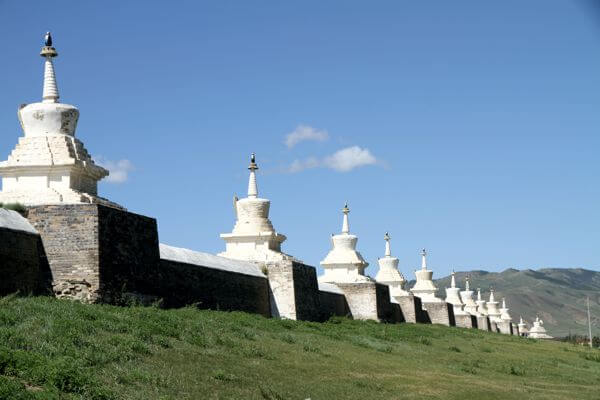
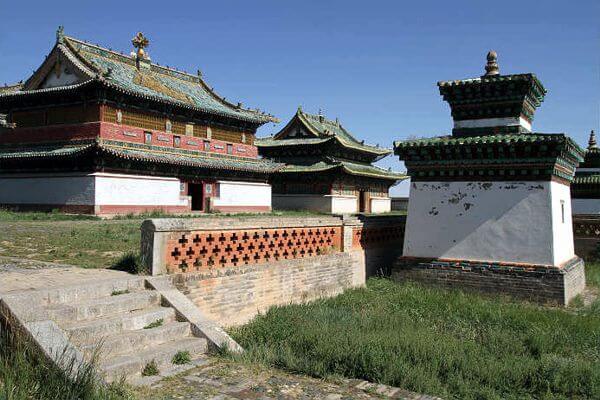
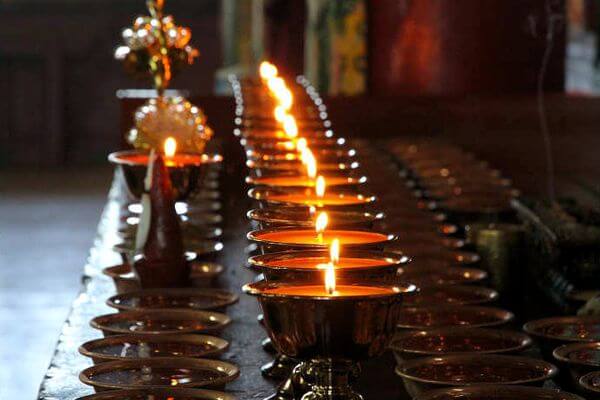

We will drive back to Ulaanbaatar, the capital city. Our team will take you directly to your hotel. You may enjoy the free afternoon to catch up all the places you haven’t visited yet. You might as well check the beautiful cultural show enjoy the colourful and rhythmic Mongolian dance, throat singing & admire the contortionists.
(B, L)
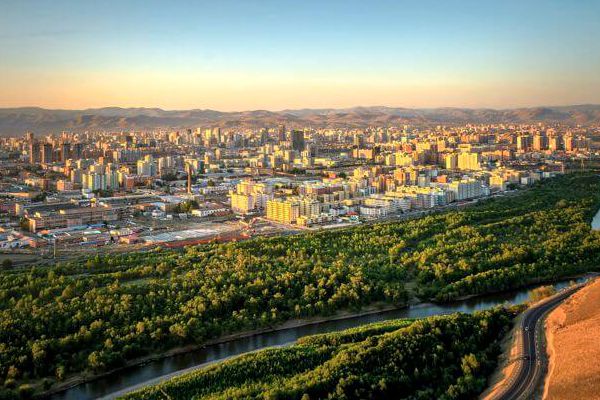
ADDRESS:
